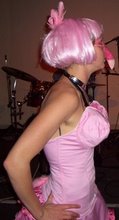I am in the process of developing a creative arts teaching resource for The Song Room. Here is an example of one activity featured:
THE KEY
In a small bag or box, bring a key (I use an old over-sized metal key) in to the session. Begin by asking the children to guess what is in the bag to get their imaginations going.
Bring out the key and pass it around for them to feel, while asking the question ‘what do you think this key opens?’ Tease out their answers if necessary. For example, if they answer ‘a door’, ask ‘what colour is it?’, ‘is it a big door or a tiny door?’ etc.
Once the children have given a few ideas, a group story begins. The story is led by the facilitator but uses ideas that the kids have put forward so far. At each interval in the story, the facilitator can ask the children to name a character, or suggest what happens next. For example, if a child thought the key opened a large castle door, we might begin the story with:
‘Once upon a time there was a boy in a castle (what shall we call him?) who found a large key next to a very small door (what colour was the door?). He put the key into the lock and slowly opened the door to find… (what did he see?).
In this way, the story is being led but also incorporates the groups’ ideas. Finish the story with a definite ending. I usually do three claps, saying ‘and that was the end of that’.
This story can be expanded in three ways:
1. Assign sound effects (vocal or with instruments) to elements in the story. Ask them ‘what sound would the door make?’, ‘what sound could be used for a castle?’ etc. Groups or individuals are then designated the sound effect to a particular part of the story. Retell the story, adding the sounds for each part, as it is told.
2. Take the children on a dramatic re-enactment of the story. Standing in a group and led by the facilitator, move around the room acting out finding the key, opening the door etc. At points in the story, the facilitator may ask the children ‘then what happens?’ to see if they remembered the story, and make it as interactive as possible. If the story deviates from the first telling, go with the new ideas, bringing it back to the original storyline if their ideas falter.
3. Ask the children to then draw a picture from the story to solidify their recollection and understanding of the story. They can draw any part they like: the key, a character or a place. Stress that the picture is to remind them of the story and is not about how well they can draw. Once they have finished, place all pictures on the ground and have the group look at them together, commenting on the varied responses shown.

No comments:
Post a Comment